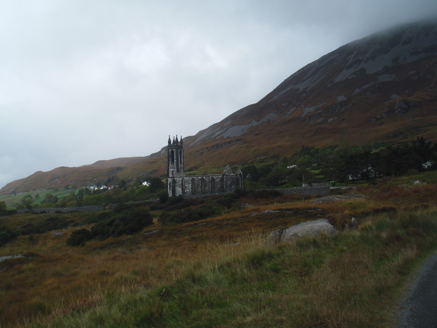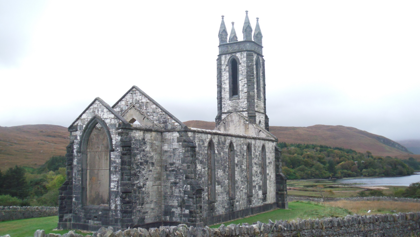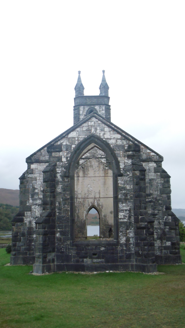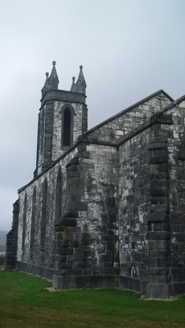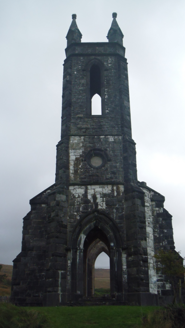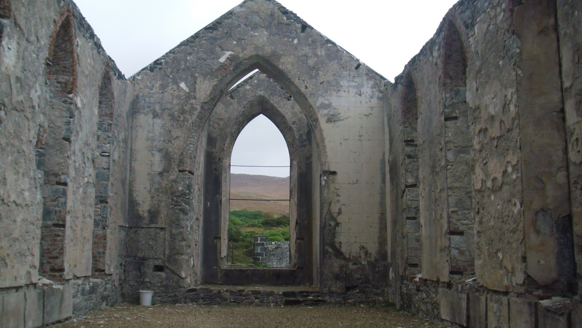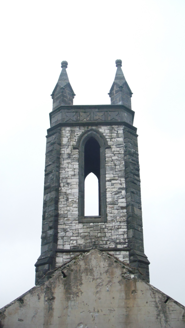Survey Data
Reg No
40904201
Rating
Regional
Categories of Special Interest
Architectural, Social
Original Use
Church/chapel
Date
1850 - 1855
Coordinates
192904, 419101
Date Recorded
07/04/2014
Date Updated
--/--/--
Description
Freestanding Church of Ireland chapel of ease, built c.1853, having four-bay nave, single-bay chancel, and three-stage entrance tower to west end. Pitched roof, un-roofed 1955, having limestone eaves course and ashlar copings to gables. Moulded parapet to tower, having ashlar corner finials with gablet detail. Squared and snecked tooled and dressed white marble walls, with projecting ashlar limestone plinth course and diagonally set grey limestone buttresses to corners of building with ashlar skews. Ashlar limestone plinth and string courses to tower, and ashlar cornice with moulded inset. Pointed-arch window openings, formerly multiple-light to east window, with chamfered limestone surrounds, integral sills and remains of cast-iron lattice windows. Tower has pointed-arch chamfered limestone doorway to ground stage, oculus to second stage and pointed-arch window opening to top stage, with chamfered cut-stone surrounds and hood-mouldings. Interior has remains of lined-and-ruled rendered walls and gravel floor. Building overlooks Loch Dhún Lúiche [Dunlewy Lough] with graveyard to southwest and quartzite rubble stone boundary wall with tooled ashlar limestone piers and wrought-iron double-leaf gate.
Appraisal
This roofless church stands in a dramatic setting in the shadow of An Earagail [Errigal Mountain] and makes a striking impression in the landscape. It was built by Jane Russell Smith as a memorial to her husband James Russell, landlord of the Dunlewy Estate, who died in 1848 and is buried under the church floor. The building is composed about a simple rectangular nave with an entrance tower and is enlivened by pointed openings. The use of local building stone adds to the integrity of the church as it sits as a picturesque ruin close to An Earagail [Errigal Mountain]. The patina developing on the stonework also adds to the interest of the structure. With the decline of the Dunlewy Estate the congregation diminished and the church fell out of regular use and into disrepair, with the roof removed in 1955.
